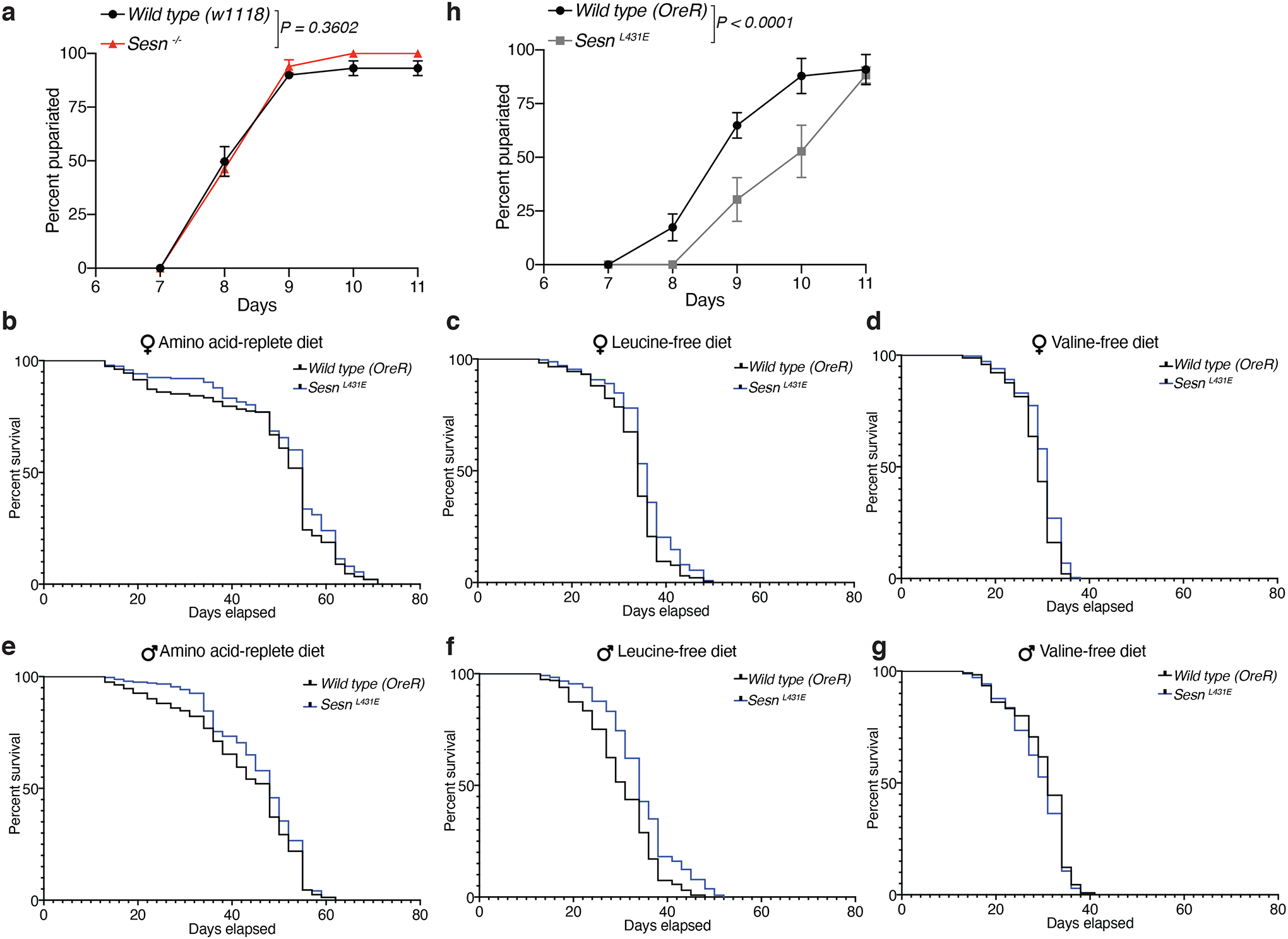Extended Data Fig. 2: The SesnL431E mutation does not affect adult fly lifespan on the chemically defined diets but does mildly delay larvae development, while loss of Sestrin does not affect larvae development.

a, Loss of Sestrin does not the affect development of larva feeding on a complete diet. Time to pupariation for w1118 and Sesn −/− larvae fed the standard yeast-based diet.
b-g, Survival curved for animals of the indicated sex and genotypes fed the indicated chemically-defined diets. (a) nWT(OreR)=235; n(SesnL431E)=238; (b) nWT(OreR)=233; n(SesnL431E)=237; (c) nWT(OreR)=242; n(SesnL431E)=248; (d) nWT(OreR)=242; n(SesnL431E)=240; (e) nWT(OreR)=229; n(SesnL431E)=243; (f) nWT(OreR)=245; n(SesnL431E)=245. See statistics in Supplementary Data 1 and methods.
h. SesnL431E larvae raised on a standard yeast-based diet are developmentally delayed.
Data are representative of three independent experiments with similar results. Statistical analysis was performed using a permutation test on the difference of the mean pupariation times of the two genotypes (a, h).
